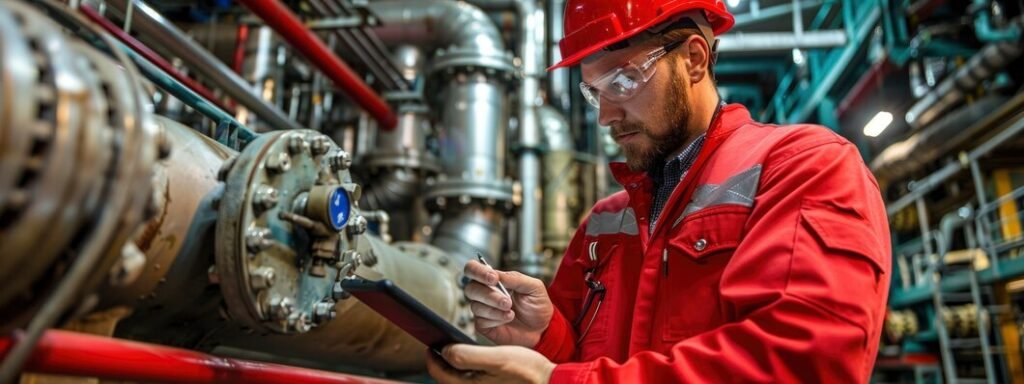When it comes to keeping things warm, heat tracing is an important topic. Whether you’re dealing with pipes, tanks, or other surfaces, understanding heat tracing can help prevent problems and ensure safety. In this article, we will explore what heat tracing is, how it works, its benefits, and the best practices for its use. Let’s dive in!
What Is Heat Tracing?
Heat tracing is a method used to maintain the temperature of surfaces and fluids. It involves using electrical heating cables, also known as heat trace cables, to provide warmth. These cables are installed along pipes, tanks, and other equipment to prevent freezing and maintain a specific temperature.
How Does Heat Tracing Work?
Heat tracing works by applying heat directly to the surface of the pipes or equipment. Here’s a simple breakdown of how it operates:
Installation: The heating cables are wrapped around or attached to the surface needing heat. They can be insulated to make them more efficient.
Power Source: The cables are connected to a power source that heats them when turned on.
Temperature Control: Many systems include sensors that monitor temperature. If it gets too cold, the system activates to provide heat. This ensures that everything stays at the right temperature.
Maintaining Temperature: By using this, you can keep fluids flowing smoothly in pipes and prevent any freezing. This is especially important in cold climates.
Benefits of Heat Tracing
It offers several advantages that make it an essential part of many industries. Let’s look at some of the key benefits:
1. Prevents Freezing
One of the main reasons for using heat tracing is to prevent freezing. In cold weather, pipes can freeze and burst, causing significant damage. Tracing ensures that fluids remain in a liquid state, avoiding costly repairs and downtime.
2. Energy Efficiency
Modern tracking systems are designed to be energy-efficient. By using temperature sensors, they only operate when necessary. This helps reduce energy costs while still providing effective heating.
3. Improves Safety
It contributes to safety in many ways. For example, it helps prevent accidents caused by frozen pipes, which can lead to spills and hazardous situations. In addition, maintaining temperatures can help prevent overheating in sensitive materials.
4. Versatile Applications
You can use it in many different settings. It is beneficial in industries like oil and gas, food and beverage, and pharmaceuticals. Whether for pipes, tanks, or even roofs, heat tracing is a flexible solution.
Best Practices for Heat Tracing
To get the most out of your heat system, it’s important to follow some best practices. Here are a few tips:
1. Choose the Right Type of Cable
There are different types of heat trace cables available. Some materials work best for high temperatures, while others are better for low temperatures. Selecting the right type based on your needs is crucial.
2. Proper Installation
Carefully install the cables and make sure they are securely attached with no gaps. Poorly installed cables won’t provide enough heat.
3. Regular Maintenance
. Regularly check the cables for damage or wear. Address any issues promptly to ensure that the system continues to work efficiently.
4. Use Temperature Sensors
Incorporating temperature sensors into your system is a smart move. These sensors can monitor conditions and adjust the heating as needed. This not only saves energy but also ensures consistent performance.
Conclusion
In summary, heat tracing is a valuable method for maintaining temperatures in pipes and equipment. It prevents freezing, improves safety, and offers energy efficiency. By choosing the right type of cable, installing it correctly, and performing regular maintenance, you can ensure a reliable heat tracing system.
If you’re in Alberta and looking for professional heat tracing services, consider reaching out to G&R Insulating. Their expertise can help you find the right solution for your heating needs. Contact Us Today to Learn More!
Frequently Asked Question
Q1. What is heat tracing used for?
A: This helps keep the temperature of pipes and equipment steady, preventing freezing and ensuring smooth fluid flow. Industries like oil and gas, food and beverage, and pharmaceuticals commonly use it.
Q2. How does heat tracing prevent pipes from freezing?
A: It uses electrical heating cables that are wrapped around or attached to pipes. These cables provide warmth to keep the fluids inside the pipes from freezing, especially in cold weather conditions.
Q3. How do I maintain this system?
A: To maintain this system, regularly check the heating cables for any damage or wear. Ensure proper installation and functionality of temperature sensors, and perform routine inspections to ensure the system operates efficiently.
Q4: How can I prevent pipes from freezing in cold weather?
A: Installing electrical heating cables along the pipes can keep fluids warm, ensuring they don’t freeze and cause damage.


